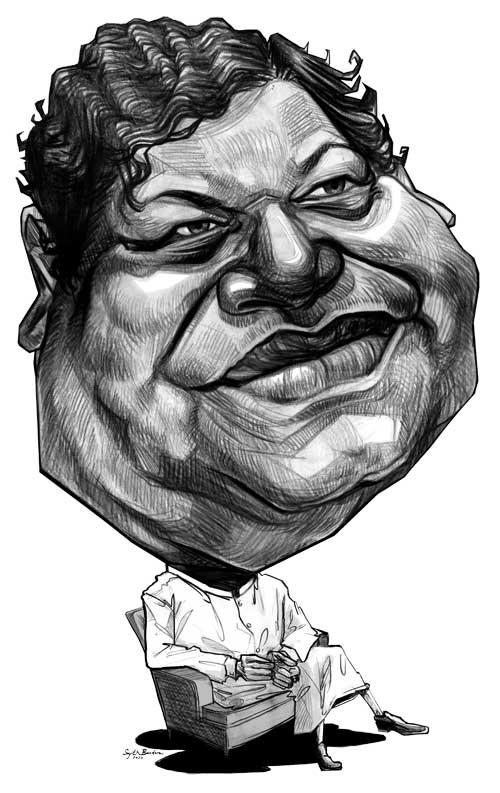28 Feb 2020 - {{hitsCtrl.values.hits}}
- If India reschedules its loan for SL, other countries will follow
- We will face the real debt crisis in 2025
- Debt soared to Rs.13 trillion during Yahapalanaya regime
- There is an economic risk involved in raising foreign currency loans
- It is always better to opt for internal borrowings despite impact on inflation
- Education tourism vital as a development strategy
- For a year, some 20,000 Sri Lankans go abroad for higher education
- Sajith is caught between the devil and the deep blue sea
- UNP will suffer the most humiliating defeat at general election
 Higher Education Minister Bandula Gunawardane speaks about the current status of the economy, political situation and planned reforms in the higher education sector. Excerpts of the interview with him:
Higher Education Minister Bandula Gunawardane speaks about the current status of the economy, political situation and planned reforms in the higher education sector. Excerpts of the interview with him:
Q There is talk about a severe financial crisis. What is the actual situation?
There is a financial crisis. That is the reality. However, the most severe financial crisis is bound to happen in 2025. We will have to spend the largest amount of money for debt servicing along with interest in 2025. The loans obtained in 2015 for a grace period of ten years will mature for repayment by that time. Now, we have to settle loans taken in 2015 for a grace period of five years. The previous government had resorted to a lot of commercial borrowings by issuing sovereign bonds. In this instance, we have to make bullet payments, not in installments. We will face the real debt crisis in 2025.
Outstanding loans remained at Rs.2 trillion in 2005. The 2005-2010 Mahinda Rajapaksa era faced the most severe financial problems in terms of global economic and fuel crises. Also, it had to finance the war effort. The economic growth flat-lined. We overcame this by raising loans. After the war ended, we raised a bulk of loans for the development of the north and east. In 2014, it increased to Rs.7 trillion. It means the then government had taken loans amounting to Rs.5 trillion.
In 2015, there was no such crisis. The government had the additional advantage of the drop in fuel prices in the world market. Despite that, the then government could not carry out any visible development. Instead, debt soared to Rs.13 trillion.
Q : However, the government is trying to raise further loans. Won’t the problem worsen then? 
We have to adopt effective strategies to find money without opting for external borrowings. Some people, without a thorough knowledge on economics, talk about external borrowings at concessionary rates. Despite such concessionary rates, there is an economic risk involved in raising foreign currency loans. When the foreign currency value appreciates, the rupee component of such loans soars. When we raised a loan in Japanese Yen in the past, the exchange rate was less than 50 cents. By the time such loans mature for repayment, the Yen value would have appreciated by leaps and bounds. Foreign currencies appreciate in value. It is always better to go for internal borrowings despite impact on inflation.
Q Is that the reason for the government to ask for a debt moratorium?
Prime Minister Mahinda Rajapaksa asked for rescheduling such loans. The Central Bank has experts in this regard. They are supposed to advise the government. The previous regime too enacted the Active Liability Management Act to work in this regard.
Those who created a debt crisis have enacted this Act. If a friendly country like India grants us concessions, other friendly countries such as China will follow. Within the next two years after passing the budget, we can resuscitate the economy. If we can get these loans rescheduled for two years, we can rebuild this economy.
 Q Investment flow from China is uncertain because of the crisis triggered by COVID-19. How will this situation affect the government’s development targets?
Q Investment flow from China is uncertain because of the crisis triggered by COVID-19. How will this situation affect the government’s development targets?
We should think of new investment opportunities. We believed in tourism as the best foreign exchange earner. We should now move away from it. Instead, we, like Malaysia, the United Kingdom and others, should pay attention to education tourism.
That is one of the main foreign exchange earners in those countries. Although some people who act like frogs in the well call them education boutiques (Adhyapana Kada), the reality is that education tourism is important as a development strategy.
In Malaysia, Prime Minister Mahathir Mohamad built an education hub. Today, Malaysia is an international education hub. People travel to Malaysia for higher education. It has boosted the economy. If we remain entrapped in a trivial mindset being unable to derive insights from such world experiences, there won’t be any future for us. For a year, some 20,000 Sri Lankans go abroad for higher education. We admit around 30,000 students to the State university system. Most Sri Lankans travel to Australia. Some of them even go to destinations such as Azerbaijan which are not much sought after. Only after three students died in Azerbaijan did we come to know about it. Only after COVID-19 hit China we came to know that such a large number of Sri Lankan students were studying there. If we read English newspapers, we know the number of international education exhibitions being conducted there.
Today, Bangladesh is rapidly growing. The growth rate is 8.1 per cent. It is an economy of USD 325 billion. I met with the Bangladeshi Higher Education Minister. Bangladesh is ready to send children to Sri Lanka if we have internationally-renowned universities. India is ready to send students to Sri Lanka if we have such universities. There are quite a number of Maldivian students studying here. I proposed to the government to invite such investments under the Board of Investment.
Q It will take some time for such investment projects to yield. People expect short-term results for problems at hand. What do you do about it?
It does not take many years. We can achieve results in one year. Today, countries do not allocate large building spaces for education. Technology is used for offering courses. Affluent people conversant with English follow correspondence courses while being at home. They even follow online courses for their doctorates. Children with English knowledge access international digital libraries. Campus courses are becoming outdated. Our universities rank much lower internationally. We should understand the global realities. We should upgrade the status of State universities. In 411 BC, Chinese monk Fa-Hsien arrived in Sri Lanka for studies. Sri Lanka has been an international education hub since then. We, unfortunately, have developed an exam-centric education system. We inherited it from the western powers that colonised us.
Q The government has set an ambitious target to admit all A/L qualifiers to the university system. How can you admit all of them with limited resources?
Actually, 181,000 will qualify for university education this time. Our target is to give all of them opportunities for higher education. We take up this challenge. We do not shy away from challenges. In ten years, we will admit 60,000 students. It is a 100 per cent increase. It is an achievement.
We will revise most courses to be research-based, job-oriented programmes. Otherwise, there is no use of producing graduates with mere paper qualifications. We want to produce employable graduates. Secondly, there are institutions offering courses. These are non-profit organisations. We will convert them to degree-awarding institutions accredited by the University Grants Commission (UGC). We will be able to create education opportunities for at least 10,000 students for a year in them. Besides, there are higher education institutions offering courses. They will be upgraded as universities. My responsibility is to provide opportunities to at least 100,000 students.
Q What will happen if you lose the Higher Education Ministry in the next Cabinet appointment after the general election?
I will ask for this ministry at least for two more years till I achieve my target. I believe I can do it.
Q As for politics, we see a lot of infighting for preferential votes ahead of the general election. The representatives of Viyath Maga ask for slots. What is your view?
It does not affect me personally. I have been in Parliament for 30 years since 1989. I have contested under different symbols. The symbol is immaterial to me. People have chosen me as an eminent personality cutting across party lines in the Colombo District. They have voted me without expecting any personal favour in return. I don’t spend lavishly. I don’t throw parties for them. I only announce my preferential number.
Today, voters admire the way President Gotabaya Rajapaksa works. It is good for me. They look up to someone who does not abuse power. They want someone who does not exploit people. People look to candidates with integrity. It is good for me.
Q But, infighting affects the unity of the government though it has no bearing on you. What is your view?
All will be contesting under the lotus bud symbol. In Colombo, people are more for the Viyath Maga ideology. People will reject those who are not in line with this thinking. Even Viyath Maga representatives will be rejected if the public impression on them is not good. This is a Sinhala Buddhist country. But others too have the freedom to follow their own religions. It is important to ensure an absolute majority for President Rajapaksa to run the government without being held to account by extremist forces.
Today, opposition leader Sajith Premadasa is in a tussle over the elephant symbol. UNPers are sentimentally-attached to the elephant symbol. Mr. Premadasa is caught between the devil and the deep blue sea. Those who are around Mr. Premadasa are anti-Sinhala Buddhist forces. They abuse power. They don’t accept the Sinhala Buddhist identity. MP Mangala Samaraweera is a classic example. He acted as the theoretician of Mr. Premadasa. The UNP will suffer the most humiliating defeat at this election whatever symbol it chooses.
16 Apr 2024 34 minute ago
16 Apr 2024 36 minute ago
16 Apr 2024 1 hours ago
16 Apr 2024 1 hours ago
16 Apr 2024 2 hours ago